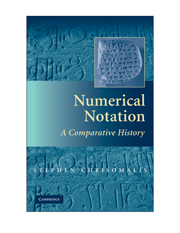Book contents
- Frontmatter
- Contents
- Acknowledgments
- 1 Introduction
- 2 Hieroglyphic Systems
- 3 Levantine Systems
- 4 Italic Systems
- 5 Alphabetic Systems
- 6 South Asian Systems
- 7 Mesopotamian Systems
- 8 East Asian Systems
- 9 Mesoamerican Systems
- 10 Miscellaneous Systems
- 11 Cognitive and Structural Analysis
- 12 Social and Historical Analysis
- 13 Conclusion
- Glossary
- Bibliography
- Index
13 - Conclusion
Published online by Cambridge University Press: 18 May 2010
- Frontmatter
- Contents
- Acknowledgments
- 1 Introduction
- 2 Hieroglyphic Systems
- 3 Levantine Systems
- 4 Italic Systems
- 5 Alphabetic Systems
- 6 South Asian Systems
- 7 Mesopotamian Systems
- 8 East Asian Systems
- 9 Mesoamerican Systems
- 10 Miscellaneous Systems
- 11 Cognitive and Structural Analysis
- 12 Social and Historical Analysis
- 13 Conclusion
- Glossary
- Bibliography
- Index
Summary
Out of the darkness, Funes' voice went on talking to me. He told me that in 1886 he had invented an original system of numbering and that in a very few days he had gone beyond the twenty-four-thousand mark. He had not written it down, since anything he thought of once would never be lost to him. His first stimulus was, I think, his discomfort at the fact that the famous thirty-three gauchos of Uruguayan history should require two signs and two words, in place of a single word and a single sign. He then applied this absurd principle to the other numbers. In place of seven thousand thirteen, he would say (for example) Máximo Pérez; in place of seven thousand fourteen, The Railroad; other numbers were Luis Melián Lafi nur, Olimar, sulphur, the reins, the whale, the gas, the caldron, Napoleon, Agustín de Vedia. In place of five hundred, he would say nine. Each word had a particular sign, a kind of mark; the last in the series were very complicated. ... I tried to explain to him that this rhapsody of incoherent terms was precisely the opposite of a system of numbers. I told him that saying 365 meant saying three hundreds, six tens, five ones, an analysis which is not found in the ‘numbers’ The Negro Timoteo or meat blanket. Funes did not understand me or refused to understand me.
Jorge Luis Borges, “Funes, the Memorious” (1964)- Type
- Chapter
- Information
- Numerical NotationA Comparative History, pp. 430 - 434Publisher: Cambridge University PressPrint publication year: 2010



